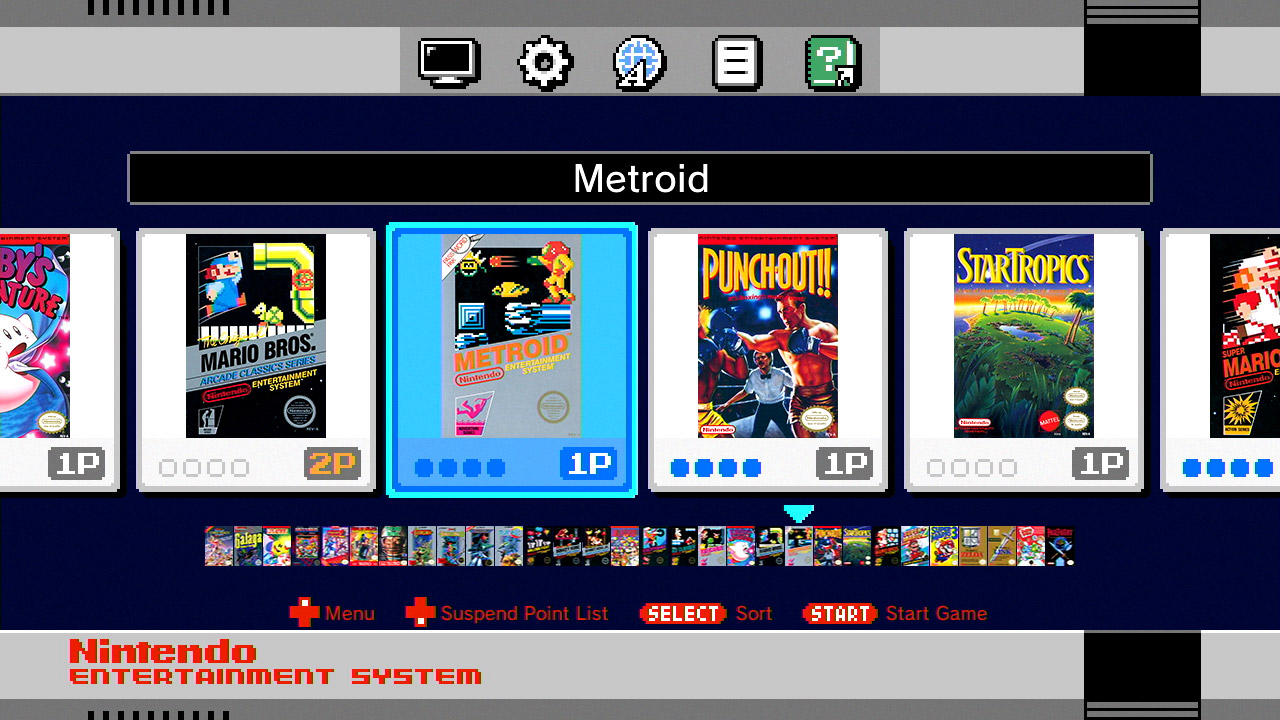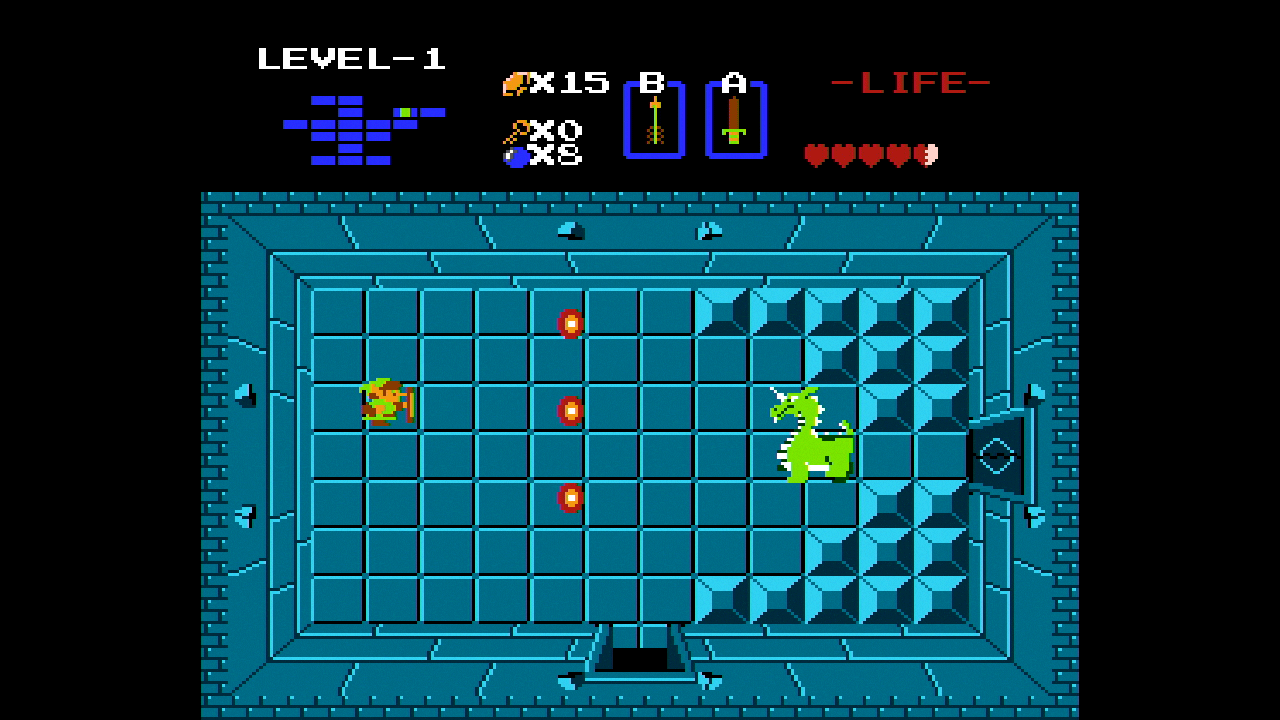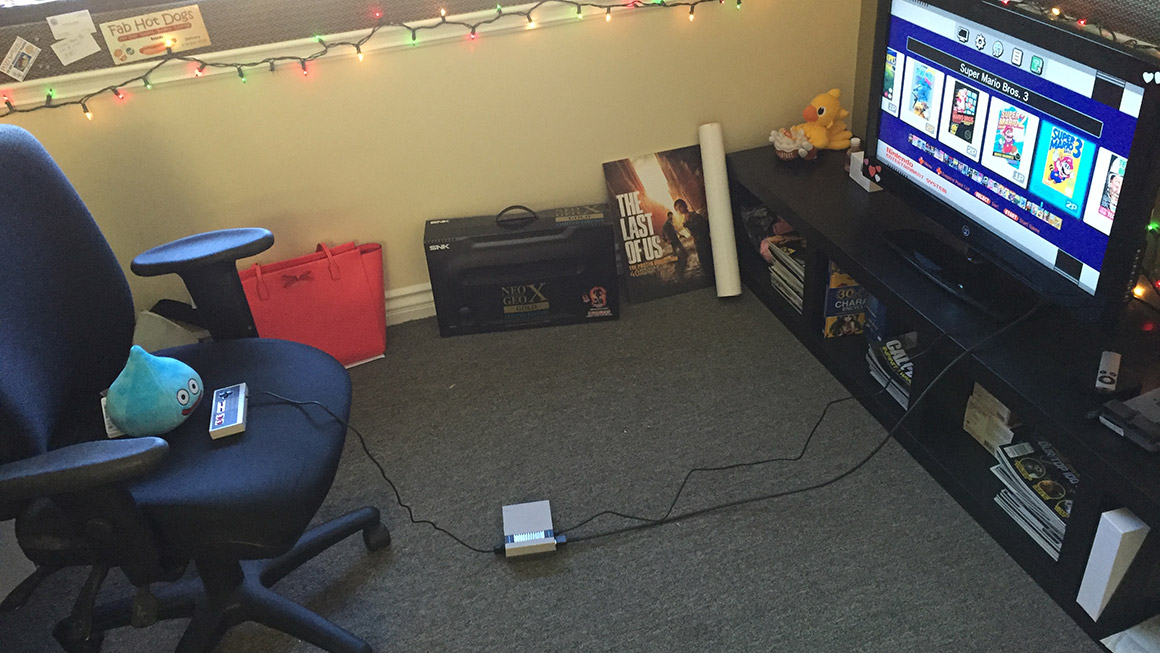Though I run the risk of outing myself as ancient by saying this, Nintendo’s 8-bit Nintendo Entertainment System was a hugely important factor in my falling in love with video games. I came to the world of digital entertainment at a very young age, and Nintendo’s first home console felt like an epic revolution compared to what had come before it. Games got bigger, graphics better, the experiences more diverse and engrossing than anything other consoles had ever been able to accomplish.
Even these thirty-one years later, there’s still a huge feeling of nostalgia for the NES, both among those of us who were there when it was new on shelves and those who came to discover it generations later. In an attempt to capitalize on that everlasting adoration for the console and its games, Nintendo has just released the NES Classic Edition, a new console (of sorts) that brings back some of the biggest hits from that era.

At first glance, the NES Classic Edition may look just like the NES of old, but get it in your hands and you’ll notice some major differences—biggest of which is that the system is utterly tiny in comparison to the original control deck. At roughly 5” x 4” x 1.5”, this piece of hardware looks and weighs more like a toy model than a working game system. However, this is indeed a game-playing machine, and comes with 30 built-in NES titles:
- Balloon Fight
- Bubble Bobble
- Castlevania
- Castlevania II: Simon’s Quest
- Donkey Kong
- Donkey Kong Jr
- Double Dragon II: The Revenge
- Dr. Mario
- Excitebike
- Final Fantasy
- Galaga
- Ghosts ‘n Goblins
- Gradius
- Ice Climber
- Kid Icarus
- Kirby’s Adventure
- Mario Bros.
- Mega Man 2
- Metroid
- Ninja Gaiden
- Pac-Man
- Punch-Out!! Featuring Mr. Dream
- StarTropics
- Super C
- Super Mario Bros.
- Super Mario Bros. 2
- Super Mario Bros. 3
- Tecmo Bowl
- The Legend of Zelda
- Zelda II: The Adventures of Link
To be clear, that’s the extent of the library the NES Classic Edition will ever play. As a self-contained system, there’s no means to plug any sort of cartridge or SD Card into the unit, nor is there any option for connecting to Nintendo’s eShop to download additional Virtual Console releases. Along with the console itself, the package comes with an HDMI cable, a USB-based power cable, and one game controller (with a second available separately).
So, how is it? Well, it’s a mostly positive experience—with a few hitches here and there.
The NES Classic Edition is basically an NES emulator (much like the Virtual Console on the Wii and Wii U), and in most regards it’s a very respectable one. Like with any emulator, if you’re someone hugely familiar with a particular game running on the original hardware, certain smaller elements or a game’s color reproduction may seem off compared to what you’re use to. For most players, however, you’ll notice little to no difference. One thing even casual players may recognize, however, is that the brightness on games played through the NES Classic Edition are far brighter than those played on either of Nintendo’s last two consoles, which will be welcome news for a lot of folks.

Thanks to the system’s HDMI output, game visuals are also crisp and colorful. Of course, back in the days of the NES, things didn’t look quite that perfect on the TVs that we used, so Nintendo has built in three output options for players to pick their preference. With Pixel Perfect, games are output exactly as they would have been created, with sprites made up of square pixels. Switching to 4:3 stretches the screen out horizontally a bit, which is how older TVs rendered NES graphics. Finally, CRT filter mode adds scanlines and dot crawl, giving games more of that old-school feel. The NES Classic Edition’s CRT filter is pretty extreme, so while some will definitely appreciate it as an option, others may wish they could tone the effect down while not completely shutting it off.
There’s one other point to the NES Classic Edition’s visual aspects that I want to mention before moving on, and that’s sprite flickering. Because of the lower level of power the NES was capable of at the time, if too many sprites were on the same horizontal plane at the same time, some of those sprites would flicker on and off as the hardware struggled to display everything at once. Some NES emulators or third-party hardware solutions—such as the RetroUSB AVS that I picked up recently—offer an option to give games a little extra oomph so that sprite flickering doesn’t occur. While the NES Classic Edition isn’t hurt by the lack of such an option, it would’ve been something possible for Nintendo to implement—and would have made going back to these games a better experience.
Speaking of games, I’m both surprised and impressed by how the NES Classic Edition’s selection of titles turned out. This is a better collection of beloved NES releases than I expected to see, and while one could have assumed it would have been mostly Nintendo offerings, there’s a good mixture of third-party games that also helped shape the original console’s success back in the day. If I have any complaint in this area, I would have loved to see a few particular games swapped out for other things. For example, Bionic Commando would have been a far better Capcom title to include over Ghosts ‘n Goblins, and I can’t help but think this could have been a more “complete” product with the addition of Metal Gear and River City Ransom. Really, though, as a set selection of thirty games, this really is a heck of an NES library.
For the games that are here, there’s an extra option built into the NES Classic Edition that makes going back to them a much more pleasant experience: save states. At any point, you can hit the Reset button on the console—an action that’ll feel wrong at first for us old-school NES owners—to return to the system’s main dashboard. There, every game offers up four save slots, where you can instantly save your progress in case you need to pick things up later or just want to make sure you won’t lose your place. Given that NES games back in the day were a mixture of battery back-up, passwords needing to be written down, or adventures that simply required you to beat them completely in one sitting, save states are a most appreciated—and, really, expected—option.

If there’s any one point in which the NES Classic Edition truly disappoints, it’s in the system’s controller. Now, there’s nothing wrong with the pad itself; as a replica of the original NES controller, it looks, feels, and even weighs like what you remember from all of those years ago. And, as the controller has the same plugs as Nintendo’s Wiimotes do, you can use the included controller to play Virtual Console titles on both the Wii and Wii U. The problem is in the length of the controller’s cord: at 2.5 feet, it’s shockingly short, and 1/3rd the length of the standard NES controller cord. Given the included HDMI and USB cables aren’t of massive length in their own right, you’ll need to be sitting quite close to your TV while playing, unless you spend extra money on extension cables. (Depending on your model of HDTV, you can use your TV’s USB port to power the system, which will help a little in giving yourself more room to play with.) I’m not sure why Nintendo went with such short controller cords, but one possibility might be because of the necessity at times to hit the Reset button on the system itself.
The NES Classic Edition is an interesting product, one that could easily have felt like a throwaway gimmick toy to make a few bucks from a holiday season when Nintendo doesn’t have a whole lot of other exciting offerings. While it does at times feel like exactly that, it also feels like a product that had genuine love and care put into it. I wish Nintendo had been more ambitious and made this a full-fledged NES Virtual Console device, but as a $60 “just for fun” product, it does a surprisingly great job helping you to relive (or experience for the first time) some of the Nintendo Entertainment System’s best moments. Just keep your expectations properly tempered—both for what exactly this system is and isn’t, and for how hard it may be to find depending on how well Nintendo has stocked the supply chain.
|
★★★★☆
It's hard not to be a little disappointed with the lack of ambition that Nintendo put into the NES Classic Edition, or the limitations the system's controller cord length means for where and how you'll play it. However, in what it is and does do, it's a fantastic piece of retro gaming nostalgia that serves as both a fun novelty item and a legitimate option for playing some of the best NES titles that hit during its era. |
Developer Nintendo Publisher Nintendo Release Date 11.11.2016 |
| NES Classic is available on . Primary version played was for . Product was provided by Nintendo for the benefit of this coverage. EGM reviews on a scale of one to five stars. | |

Mollie got her start in games media via the crazy world of gaming fanzines, and now works at EGM with the goal of covering all of the weird Japanese and niche releases that nobody else on staff cares about. She’s active in the gaming community on a personal level, and an outspoken voice on topics such as equality in gaming, consumer rights, and good UI. Check her out on Bluesky and Mastodon.